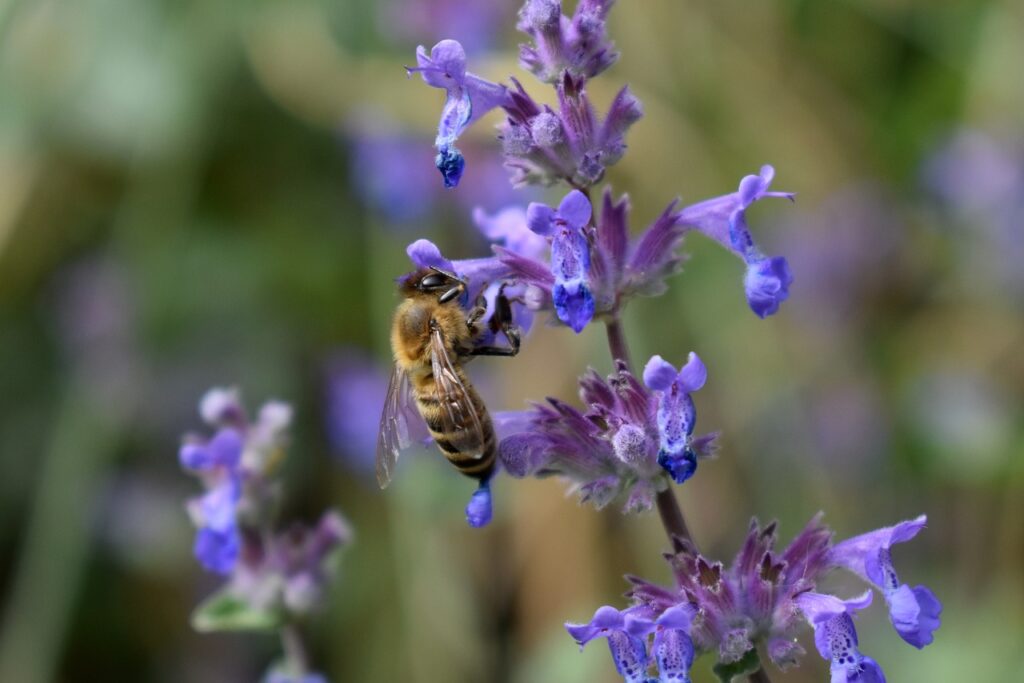
Catnip is not just for cats anymore! Learn how cultivating this herb can promote relaxation, aid digestion, and even alleviate pain—perfect for both you and your cats.
This post may contain affiliate marketing. As an affiliate, I may make a commission on items you choose to buy.
I am sure we have all heard about catnip. It comes in all kinds of cat toys and sprays but did you know that catnip can benefit you as well?
Its hard to think about catnip as a beneficial human herb but its true! It actually has a ton of benefits. I would even go so far to say that everyone should grow it in their gardens.
Everyone is not lucky enough to have a giant gardening area and lets face it, plants can take up a lot of real estate. I am in the same boat and truly have to consider which plants I grow in my garden that would benefit my family best.
What is Catnip?
Catnip is a perennial herb most often seen dried for cat enrichment toys. It is also known as catsworth or catmint.
You may be familiar with catnip as the herb that elicits playful or calming effects in your cats and see it commonly at your local pet store.
Catnip comes in many different forms including but not limited to:
- Seeds to grow fresh herbs
- Plant growing kits at your local pet store
- Dried herb packets or containers
- Cat toy inserts
- Cat sprays
Catnip has many benefits for humans and has actually been used for many years as a beneficial herb but it is important to note its benefits and downfalls for cats as well.
In this article, I will be discussing catnips benefits for you and your family with a brief special consideration when using it with your cats.
How is Catnip Grown?
Catnip is a perennial plant that is best started indoors about 6 weeks before your last frost. Catnip requires sunlight to germinate so be sure not to cover the seeds and give your seeds plenty of light.
After your last frost transplant your catnip seeds outdoors in a sunny area that gets full sun to partial shade.
Consider the location of your catnip carefully because if the leaves are ruffled, oils will be expressed that attracts cats. I like to plant my catnip in a location that I do not have any toxic plants to cats just in case I accidentally set the plant to express its oils.
My personal cat, Sterling, is indoor only but we do have some indoor/ outdoor cats in our neighborhood.
Catnip does not like to be soaked. Be sure to water when your soil is dried and plant in well draining soil.
Compost is a great fertilizer for your catnip to get your plant established and keep it fed over the years. I personally absolutely could not live without my Catnip Benefits for Your Cats Have you ever had a cat get feisty and want to play with your arm or leg? Yeah, me too. Catnip can possibly help that! I know you’re wondering how. Well, catnip has different effects on every cat but when used it its strongest form (freshly grown), your cat may have either sedative effects or playful effects. My cat when given cat nip gets very playful and runs around the house or I am even able to give him a toy to play with on his own. Its great because I am not the one used as a scratch post when he gets in those moods. My cat could play for hours with a feather toy and still never get out of his feisty mood but catnip will get him going enough to knock him out! It also works for him when he has some stress from something. I am not saying that catnip will cure your cats anxiety. I just use it as a distraction from an immediate stress. Every cat is different though so be sure to check how it effects you cat. If your cat is experiencing some anxiety or constant stress, speak to your veterinarian about safe ways to control it. Special Note Catnip has been proven to be safe in minimal doses for your cat. In some cases, when ingested, catnip can cause vomiting and diarrhea in your cats. It has been proven nontoxic to dogs. This is the easiest catnip toy that you and your cat will love! True catnip benefits! Items You Will Need Step 1: Cut the sock to your desired size This step is optional but if you are going to cut it, I would recommend keeping the sock long enough that your cat can grip the sock and kick it with their back legs if they want. Step 2: Stuff the tube sock with catnip and cotton balls You can either alternate catnip and cotton balls in the sock or you can mix the two together in a bowl first and then stuff it. The amount of cotton balls you will need will depend on your sock size. The trick is you really want to stuff the sock so your cat has something to grip onto. Be sure to leave about an inch of space near the sock hole. Step 3: Glue the sock shut First glue the sock hole shut with the hot glue gun where the cotton ball ends. This should be slightly inside of the sock. This is to secure the end. Then to secure it even more twist the end of the sock and roll the outer edges down over the cotton balls and glue the edges down where they meet the sock. And that it! Let it dry, which should be pretty quick and give it to your cat to play with! When drying out catnip, you want to be very careful to preserve the natural oils it emits both for medicinal purposes and for your cats. As I stated earlier in the blog, cats are attracted to the oils that are emitted off of the plant when it is rustled around, so preserve the oils for the best effects! Oils are burned off from heat so it is important to not heat your catnip with a dehydrator or the oven. To keep the true form and natural oils, it is best to hang your catnip upside down using butcher’s string to tie the bottom of the stalks together. Hang the stalks upside down by the string. This may take a few weeks for your herbs to dry out but it saves the oils! After their fully dried, rub the dried catnip so it turns into flakes. This makes the herb flakes that you can use for all the catnip benefits. Catnip benefits not only cats but can also benefit you. There are many different ways you and your family can partake in catnip benefits. All of these benefits have been studied and proven to have the wanted effects. It should be ingested in moderation and of course, as always, consult your doctor (or your veterinarian) if you have any questions about if it will help you or your cat. When ingesting the catnip for its benefits, it is best to keep the oils intact as much as possible. There are teas, recipes and other forms of ingestion or you can elicit the smells through the extracted oil although that has not been proven to have as much of an effect. Ingredients Catnip isn’t just for cats—it offers a range of benefits for humans too. While it’s renowned for its playful effects on our feline friends, catnip also serves as a versatile herb with numerous therapeutic properties. From aiding in sleep and digestion to reducing stress and inflammatory pain, its medicinal uses make it a valuable addition to any garden. Whether you have a sprawling garden or a compact urban space, catnip is easy to cultivate and maintain. Incorporating catnip into your garden not only enhances the well-being of your pets but also promotes sustainable living and holistic health for your family. Whether you’re a seasoned gardener or a beginner, cultivating catnip offers a rewarding experience with benefits that extend to both pets and humans alike. Explore the versatility of catnip and discover its potential to enrich your life and garden. Whether you’re crafting homemade cat toys or brewing a soothing cup of tea, catnip brings a touch of natural wellness to every aspect of your day.
Catnip Benefits and Special Consideration in Cats
DIY Catnip Toy For Your Cats
How to Dry Out Catnip
Catnip Benefits for Your Humans
Catnip Tea Recipe
25 Dried Catnip Leaves
Boiled Water
Tea Dispenser Bag
Juice of Half a Lemon
Dried Second Herb of Choice (I personally like lavender and mint)
Honey to Taste (optional)
Directions
Crush all herbs into a glass bowl. Glass will allow you to scrape out the bowl of all of the oils if needed.
Dispense the herb mixture into your tea bag pouch.
Tie the bag and dunk it into the hot water until you meet your desired strength.
Enjoy for needed effects.Conclusion








